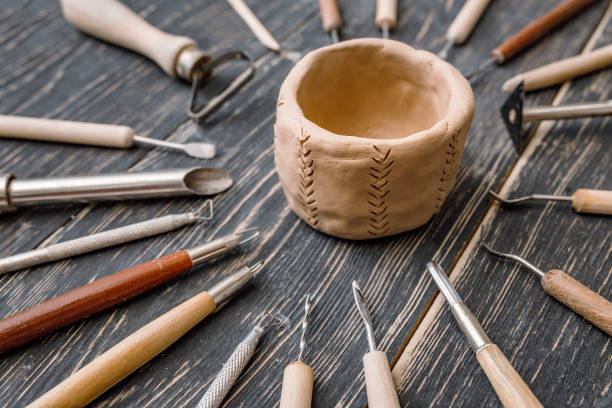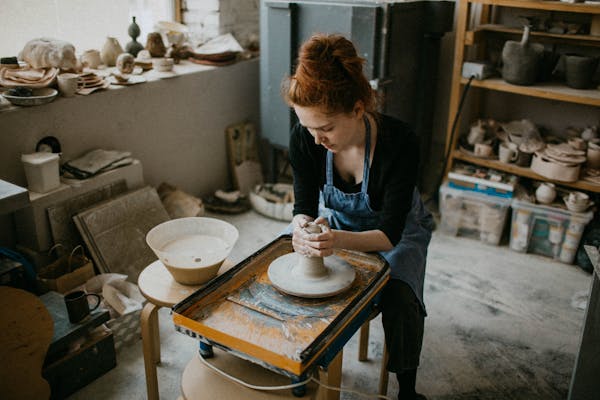Learn How to Make a Pottery Wheel with Simple Materials and Enjoy Pottery Making at Home”
Have you ever wondered if it’s possible to make a pottery wheel at home? Creating your own DIY pottery wheel is not only a cost-effective solution but also a fun project that allows you to enjoy pottery making from the comfort of your own space. In this comprehensive guide, we will provide you with a step-by-step tutorial on how to make a pottery wheel at home using simple materials. Get ready to unleash your creativity and embark on a pottery journey like never before!
At PotteryShop, we believe that pottery making should be accessible to everyone. While we offer a wide range of ready-made pottery wheels, we understand that some individuals prefer the satisfaction of crafting their own equipment. Our website provides a wealth of resources and products to support your pottery endeavors, including clay, tools, and glazes.

Materials You’ll Need: Before diving into the process, let’s gather the materials required to build your DIY pottery wheel. These materials are readily available and won’t break the bank:
- Plywood or sturdy wooden board (for the base)
- PVC pipe or metal rod (for the wheelhead)
- Bearings or lazy Susan hardware (for smooth rotation)
- Electric motor or cordless drill (for spinning the wheelhead)
- Adjustable speed controller (for controlling the wheel speed)
- Miscellaneous tools (screws, bolts, nuts, and washers)
- Sandpaper, paint, and varnish (for finishing touches)
Step-by-Step Guide:
- Design and Prepare the Base: Begin by designing and cutting the base for your pottery wheel. Use plywood or a sturdy wooden board, ensuring it is stable and durable. Refer to our detailed DIY Pottery Wheel Guide on our website for sample base dimensions and designs. Remember to sand, paint, and varnish the base for a polished look.
- Build the Wheelhead: Attach a PVC pipe or metal rod to the center of the base. This will serve as the axle for the wheelhead. Secure it firmly using screws or bolts. Ensure it is centered and straight, allowing smooth rotation.
- Install the Bearings or Lazy Susan Hardware: To enable smooth rotation, install bearings or a lazy Susan hardware system on the underside of the wheelhead. These components will ensure stability and ease of movement during pottery making. Follow the manufacturer’s instructions for proper installation.
- Connect the Motor or Cordless Drill: Attach an electric motor or cordless drill to the base, aligning it with the wheelhead axle. This will provide the spinning motion for the pottery wheel. Connect the motor or drill securely using screws, nuts, and bolts. Additionally, incorporate an adjustable speed controller to regulate the wheel’s rotation speed.
- Fine-tune and Test Your DIY Pottery Wheel: Once all the components are in place, double-check the stability and alignment of your DIY pottery wheel. Make any necessary adjustments to ensure smooth rotation and proper functionality. Test the wheel by turning on the motor or cordless drill and adjusting the speed controller. Congratulations! You’ve successfully created your own pottery wheel at home.

Enhance Your Pottery Experience with PotteryShop: While making a DIY pottery wheel can be a rewarding endeavor, it’s important to have access to high-quality

